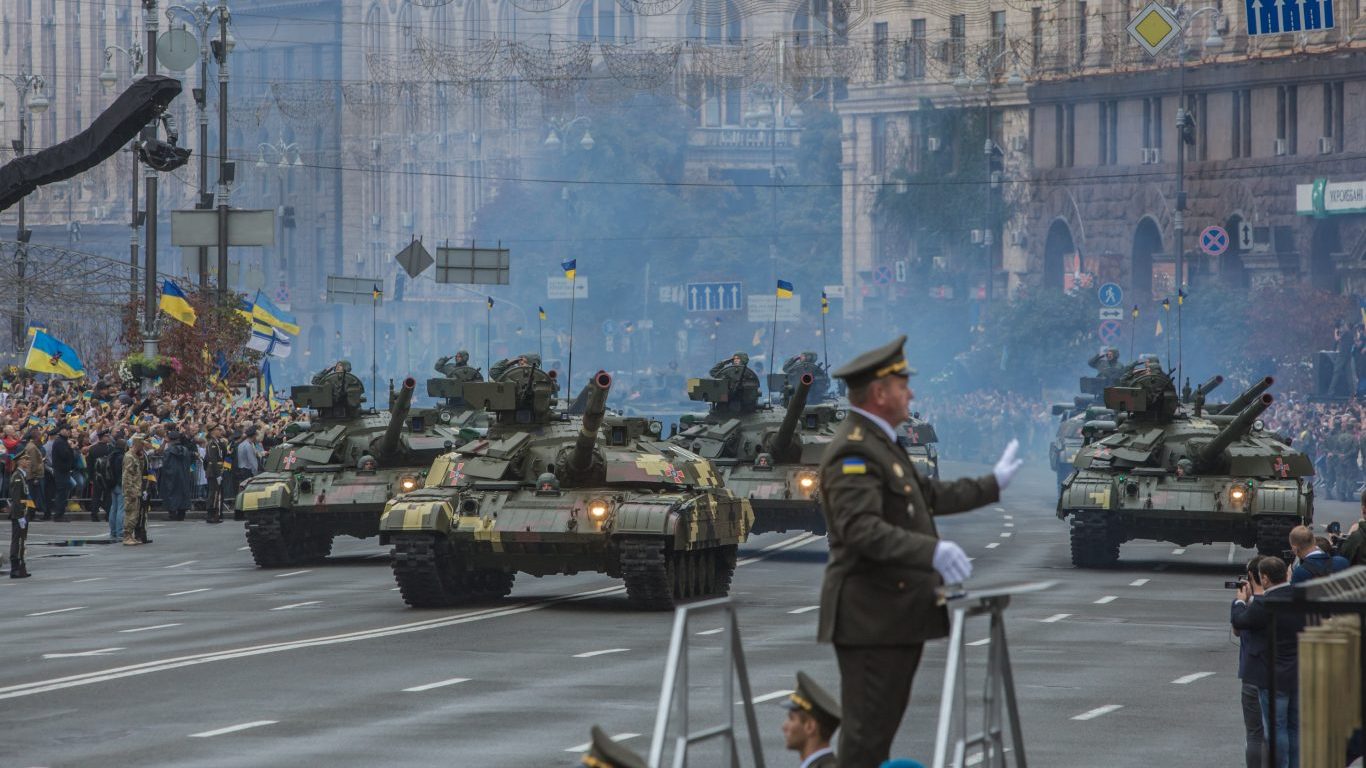

As the world reels from Russia’s incursion into Ukraine, it is worth noting that Russian expansionism is nothing new. Russia, the world’s largest nation by area, has been casting its eye on neighboring territories for much of its history, from the time it was an imperial power to its emergence as the communist colossus Soviet Union in the 20th century.
Ukraine is one of 15 nations that once were part of the Soviet Union. Before the creation of the world’s most powerful communist state after World War I, many of these places had been absorbed into the vast Russian Empire during the 18th and 19th centuries. And after the dissolution of the USSR in 1991, they broke into 15 nations. (See how Russia and Ukraine military spending compares to the world.)
To find the countries that formed the USSR before its dissolution in 1991, 24/7 Wall St. used History.com’s information about the Soviet Union. All other data is from the World Bank and for 2020 with noted exception. GDP and GNI per capita figures are in current U.S. dollars. Turkmenistan’s GDP and GNI figures are for 2019.
To understand Russian expansionism, one has to understand its geography and its historic fear of being invaded. The country’s western borders have no mountain ranges, bodies of water, or other geographical features to serve as natural defenses. Russia also has few ports, and they are mostly unusable during the winter. Russian expansionism in the west has been in response to invasions by Sweden, France, and Germany, among others, and it has sought buffer states to protect it. (This war killed the most people in history.)
The Baltic nations of Latvia, Lithuania, and Estonia, and Belarus, Ukraine, and Moldova have served as buffer states to Russia’s west. Georgia, Armenia, and Azerbaijan serve the same purpose to Russia’s southwestern flank, while Kazakhstan, Uzbekistan, Turkmenistan, Kyrgyzstan, and Tajikistan border Russia east of the Black Sea in Asia.
The former Soviet republics have not been independent that long and have little in the way of democratic traditions. They have had mixed results in transitioning to representative government from the one-party system under the Soviet Union. Many have had presidents who have stayed in power for many years and exercised authoritarian power. Corruption has been a legacy of the former Soviet regime. These nations also have had difficulty making the shift to market-oriented economies from centralized, planned economies.
The Baltic nations have gravitated toward the West since the dissolution of the Soviet Union, joining NATO and the European Union, much to the concern of Russia.
Click here to look at the recent military history of every former Soviet Republic
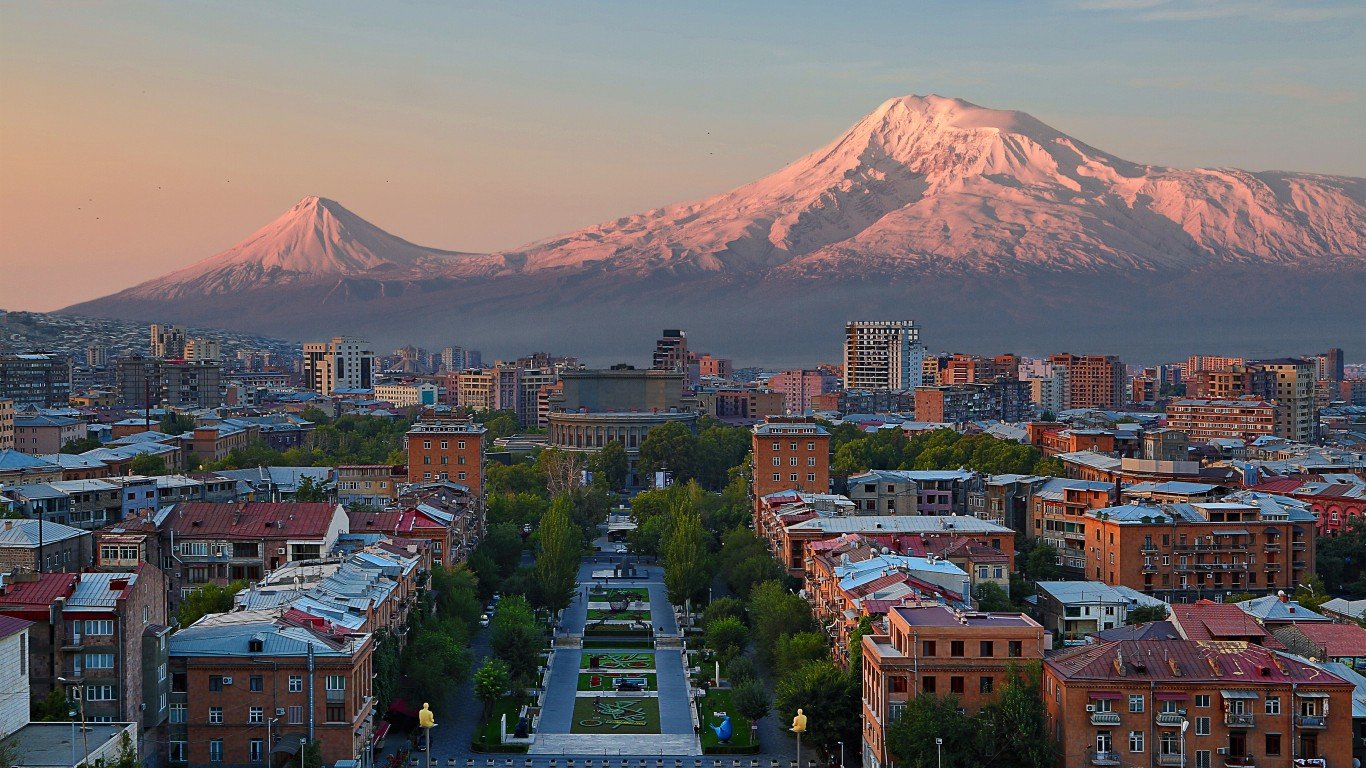
Armenia
> GDP: $12.64 billion
> GNI per capita: $13,110
> Population: 2,963,234
Armenia’s history has been a tragic one, marked by the genocide committed against its people by the Ottoman Empire during World War I. But not all of Armenia was under Ottoman control. A part of Armenia that was within the Russian Empire declared independence in 1918 but was invaded by both Turkey and Soviet Russia. Armenia became a Soviet republic in 1920 and remained one until 1990, declaring its sovereignty in 1990 as the Soviet Union dissolved.
[in-text-ad]
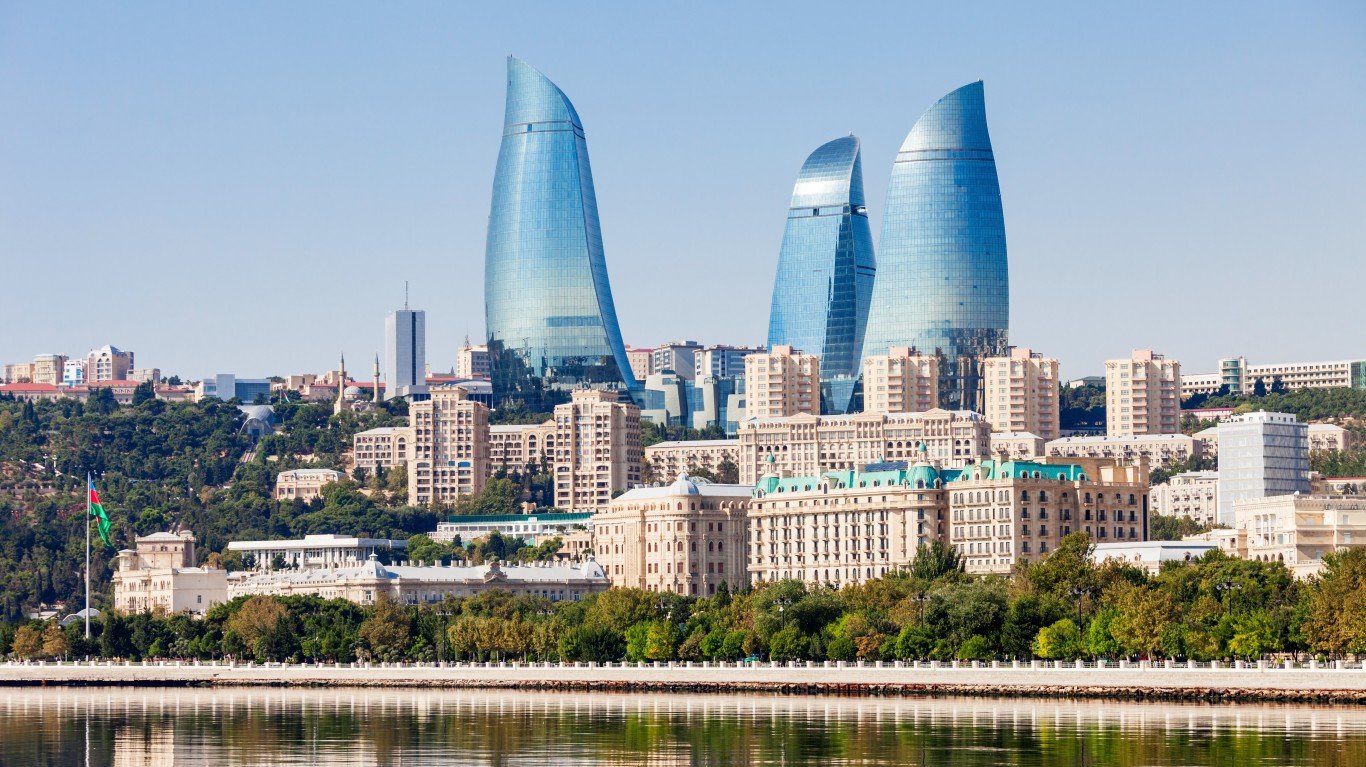
Azerbaijan
> GDP: $42.61 billion
> GNI per capita: $14,390
> Population: 10,093,121
Azerbaijan, a landlocked country at the crossroads of Europe and Asia has had a turbulent history. It was briefly independent after the collapse of the Russian Empire in 1918 and became part of the Soviet Union. Since the dissolution of the Soviet Union, Azerbaijan has been embroiled in a protracted dispute with Armenia over the Nagorno-Karabakh region that is home to ethnic Armenians.
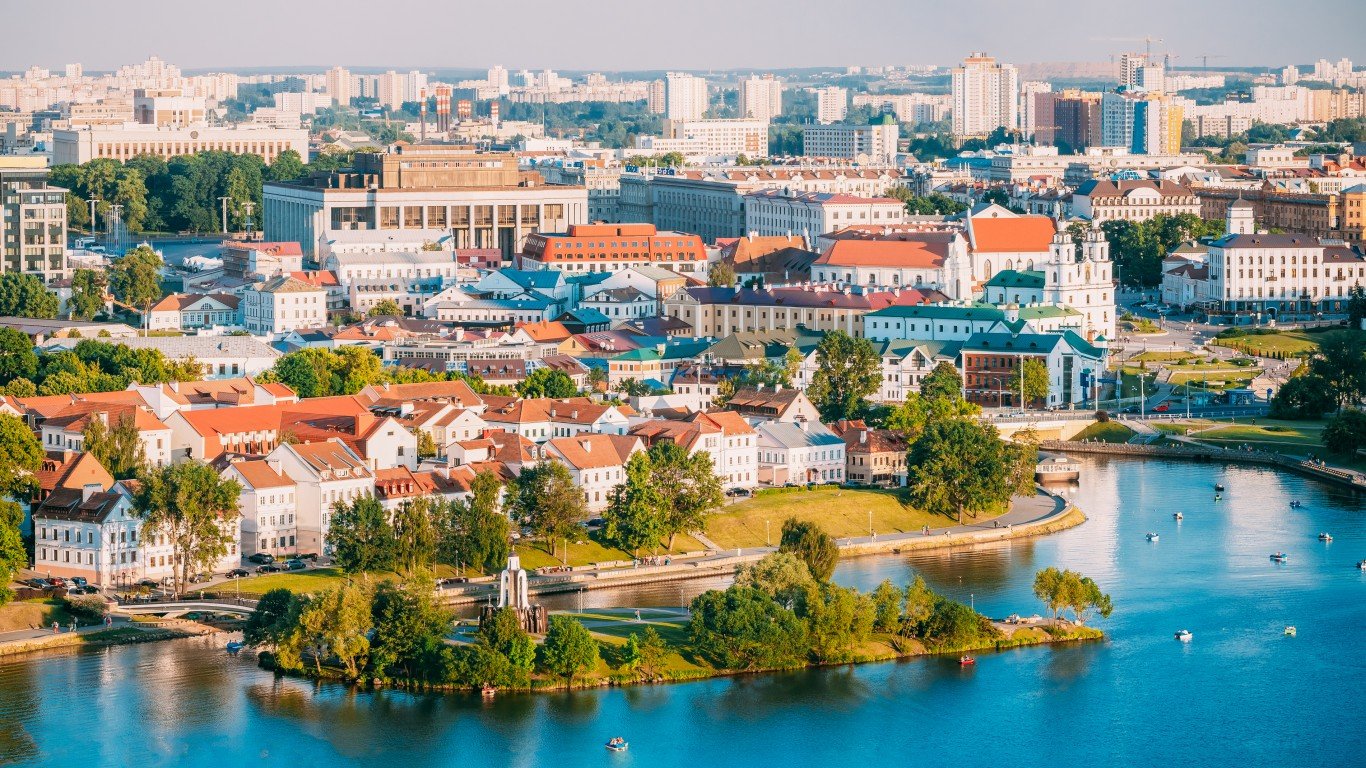
Belarus
> GDP: $60.26 billion
> GNI per capita: $19,400
> Population: 9,379,952
Belarus, which borders both Russia and Ukraine, has had the closest ties to Russia of all the former Soviet republics. In 1999, the two nations signed a pact with the goal of more political and economic integration. Alexander Lukashenka was elected president in 1994 and has remained in power. Under his leadership, the economy is centralized and political and civil rights are restricted.
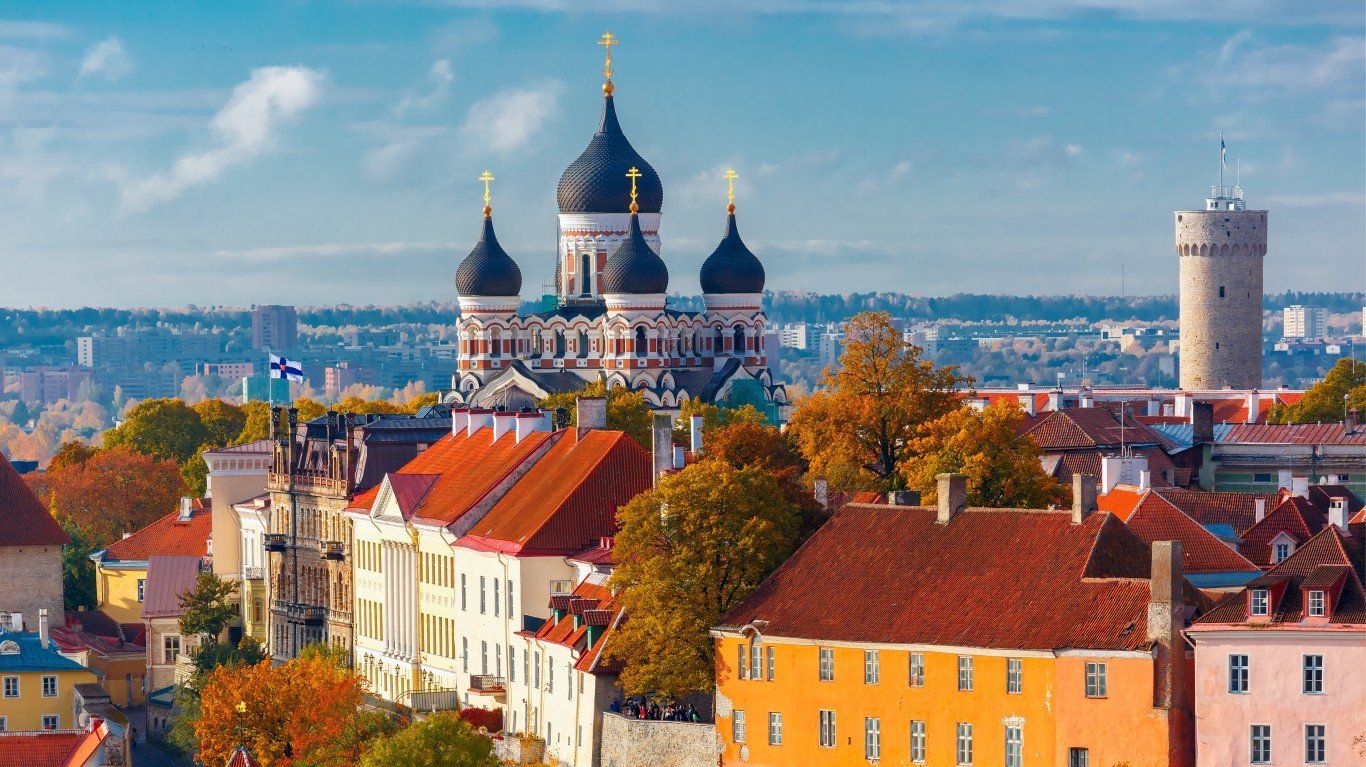
Estonia
> GDP: $30.65 billion
> GNI per capita: $37,520
> Population: 1,331,057
The Baltic nation of Estonia was ruled by various European powers for centuries until it became independent between the world wars. It was occupied by the Soviet Union in June of 1940 and overrun by the German army in 1941. After the Soviet Union repelled German forces from Estonia, the nation remained in the Soviet orbit until the collapse of the Soviet Union in 1991. Since then, Estonia has drawn closer to the West, joining NATO and the European Union in 2004.
[in-text-ad-2]
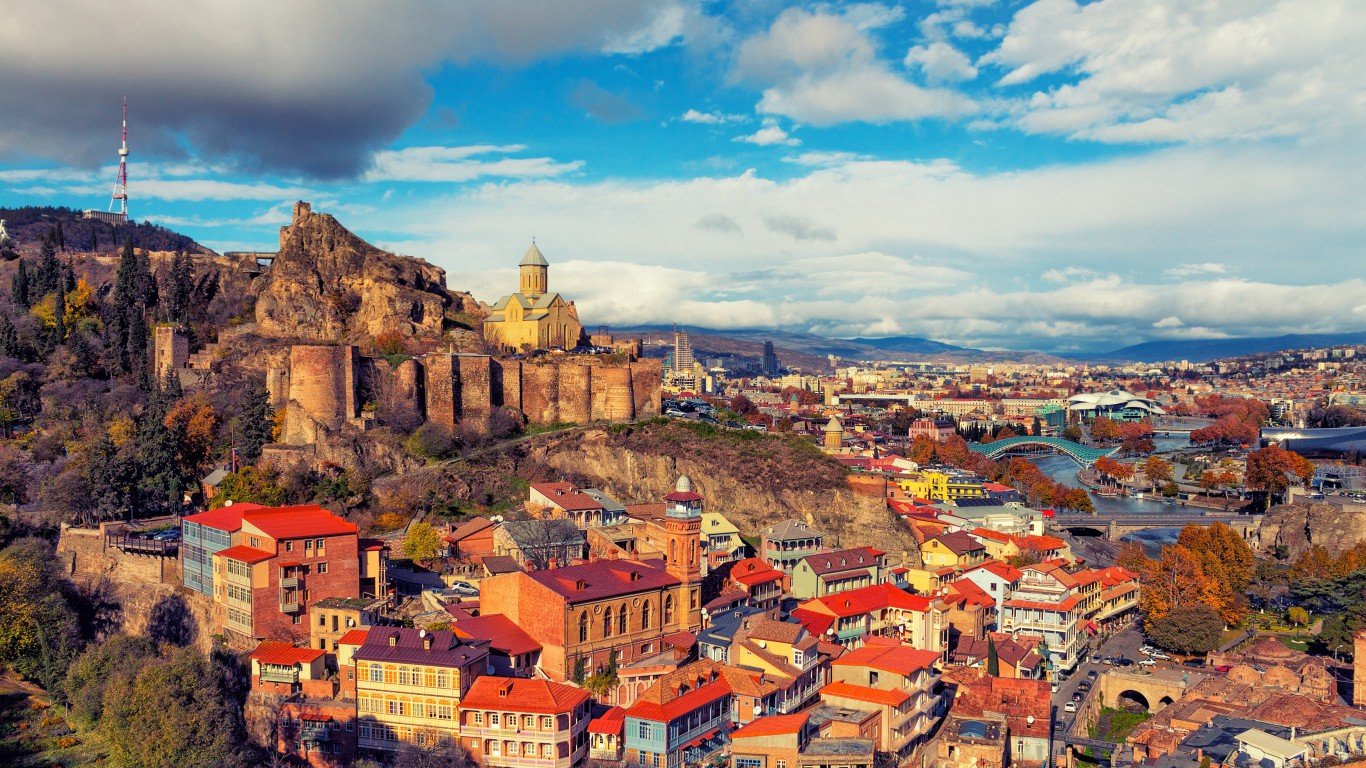
Georgia
> GDP: $15.85 billion
> GNI per capita: $14,080
> Population: 3,714,000
Georgia, the birthplace of Soviet leader Joseph Stalin, is located on the eastern shore of the Black Sea between Turkey and Russia. Georgia was part of the Russian Empire and was briefly independent after the empire collapsed before it was incorporated into the Soviet Union in 1921. Since the fall of the Soviet Union, Georgia has had disputes with Russia over the separatist regions of Abkhazia and South Ossetia that led to a Russian invasion in 2008.
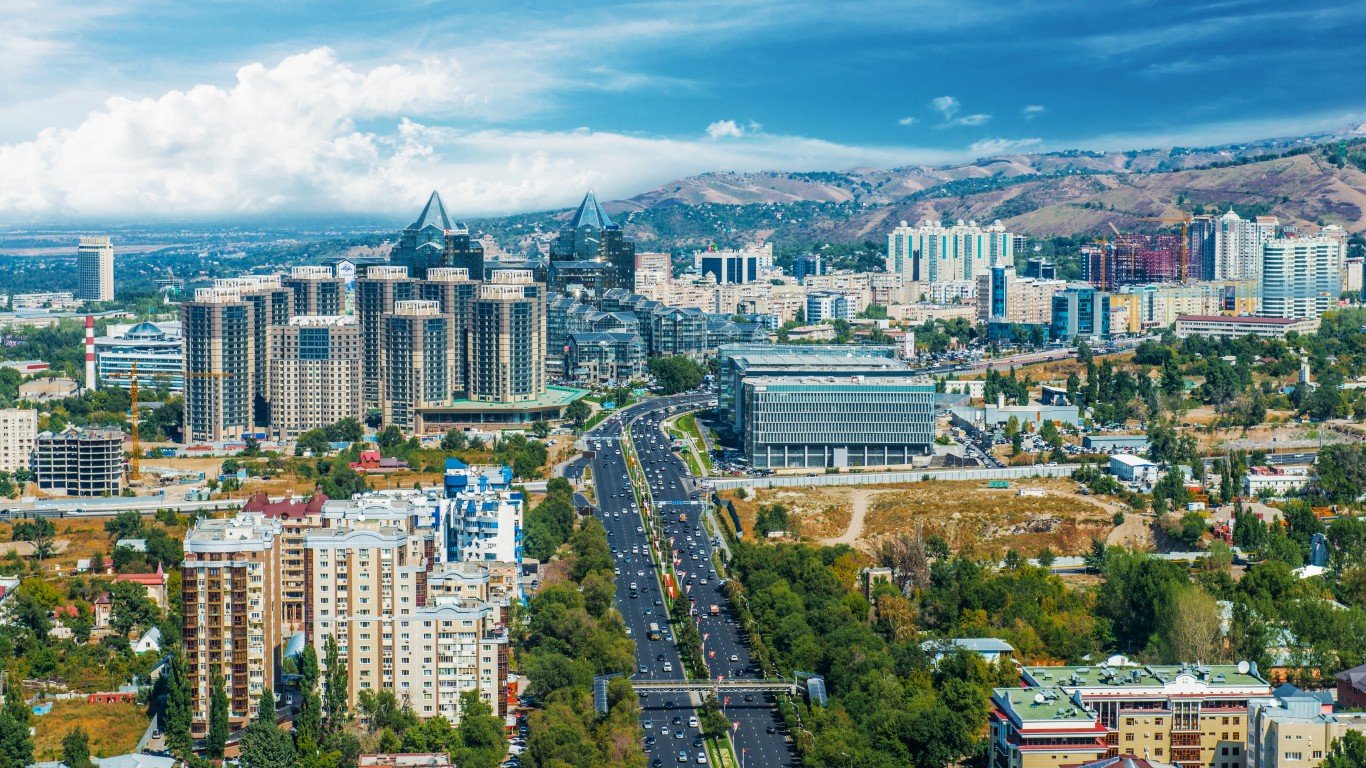
Kazakhstan
> GDP: $171.08 billion
> GNI per capita: $24,410
> Population: 18,754,440
The Asian nation of Kazakhstan has an area of 1,693,174 square miles and is the world’s largest landlocked country. It was absorbed into the Russian Empire in the early 19th century and was briefly independent after the collapse of the empire before the Soviet Union made it a part of that nation in 1920. Kazakhstan became a center for Soviet space exploration activity in the 1950s and 1960s. Kazakhstan declared its independence in 1991. Nursultan Nazarbayev became president, and although he initially followed a moderate path, his tenure became progressively authoritarian.
[in-text-ad]

Kyrgyz Republic
> GDP: $7.74 billion
> GNI per capita: $4,750
> Population: 6,591,600
Kyrgyz Republic, or Kyrgyzstan, is another landlocked Central Asian nation. The region was annexed by the Russian Empire in 1876. Fifty years later, restive Kyrgyzstan revolted in 1916, leading to the deaths of about one-sixth of the Kyrgyz population. It was made a Soviet republic in 1926 and became independent in 1991 when the USSR dissolved. The transition to independence has not been easy. Nationwide demonstrations in 2005 and 2010 led to the removal of its first two presidents. In October 2020, protests against election results led to the resignation of President Sooronbay Jeenbekov. Sadyr Japarov, who had been in prison, became acting president and was eventually elected.
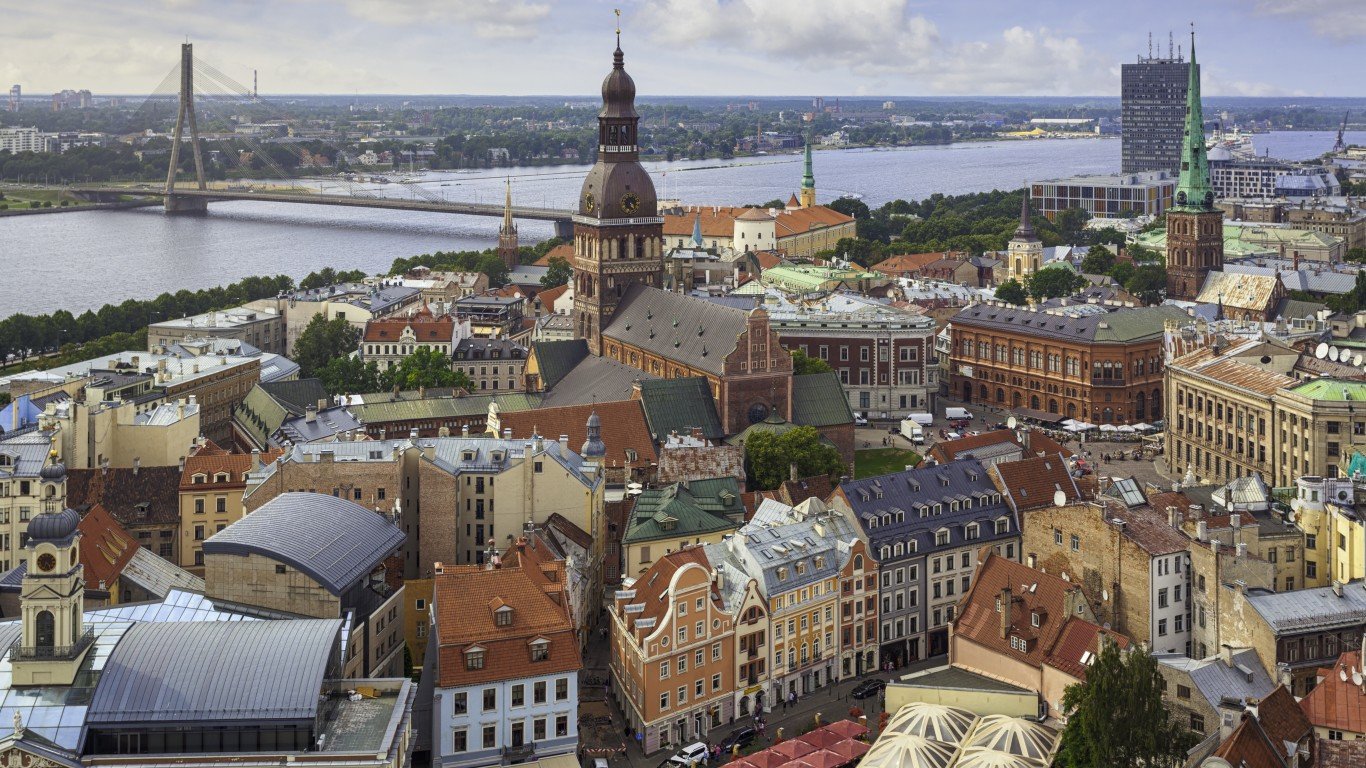
Latvia
> GDP: $33.71 billion
> GNI per capita: $31,460
> Population: 1,901,548
One of the three Baltic nations, Latvia became an independent republic following the end of World War I after centuries of control by various European countries. It was annexed by the Soviet Union in 1940 and gained independence in 1991, when the Soviet Union collapsed. Since then, Latvia has moved closer to the West, joining NATO and the European Union. Ethnic Russians account for about one-fourth of the population, a bone of contention with Russia.
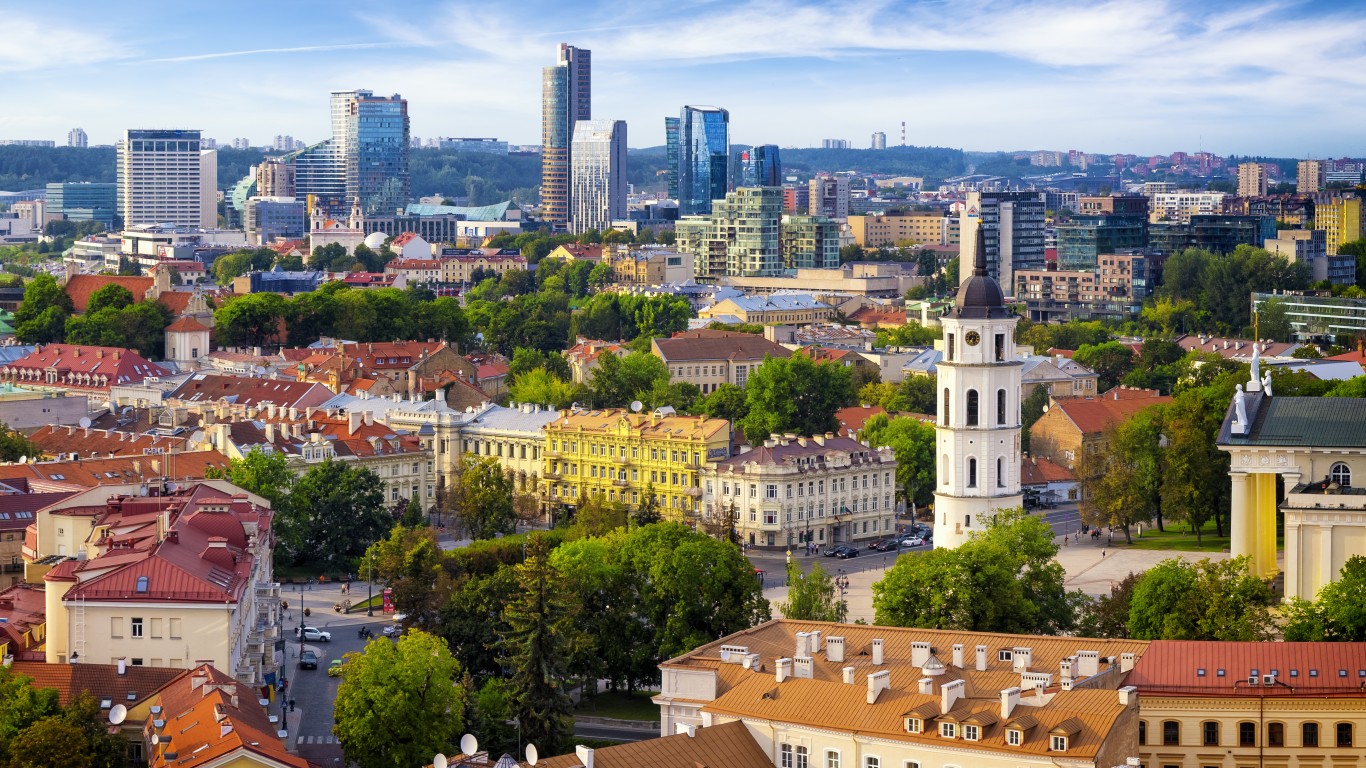
Lithuania
> GDP: $56.55 billion
> GNI per capita: $37,760
> Population: 2,794,700
Lithuania, another Baltic nation, combined with Poland to form a union that lasted for more than 200 years until various European powers carved it up in 1795. Lithuania declared independence following the First World War but was annexed by the Soviet Union in 1940. Lithuania became the first of the Soviet republics to declare independence on March 11, 1990, though Moscow did not recognize it until September 1991. Like the other Baltic nations of Latvia and Estonia, Lithuania has gravitated toward the West, joining NATO and the European Union.
[in-text-ad-2]
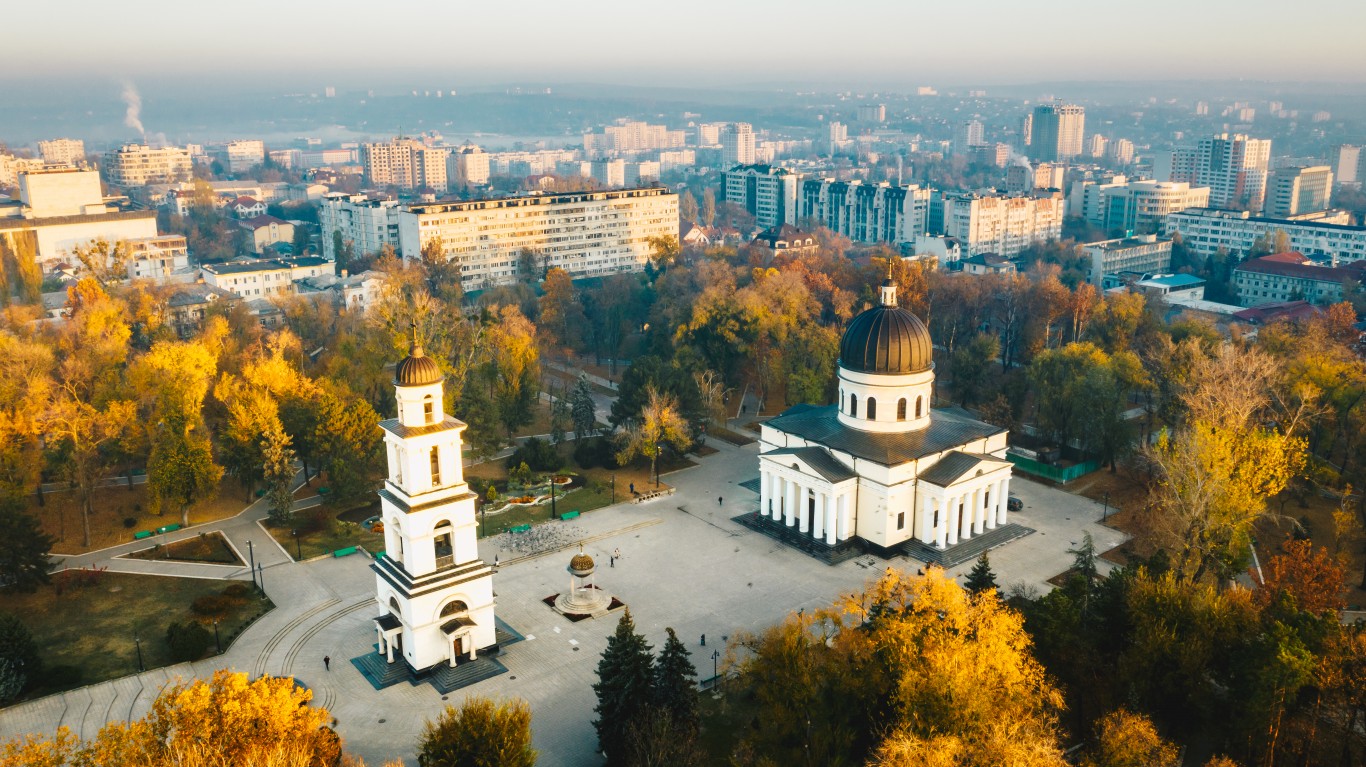
Moldova
> GDP: $11.92 billion
> GNI per capita: $13,510
> Population: 2,620,495
Much of present-day Moldovan territory, northeast of Romania, was absorbed into the Russian Empire in 1812. It combined with Romania following World War I. After World War II, it became part of the Soviet Union. Landlocked Moldova has been independent from the Soviet Union since 1991. However, Russian forces have remained on Moldovan territory east of the Nistru River in the disputed region of Transnistria.
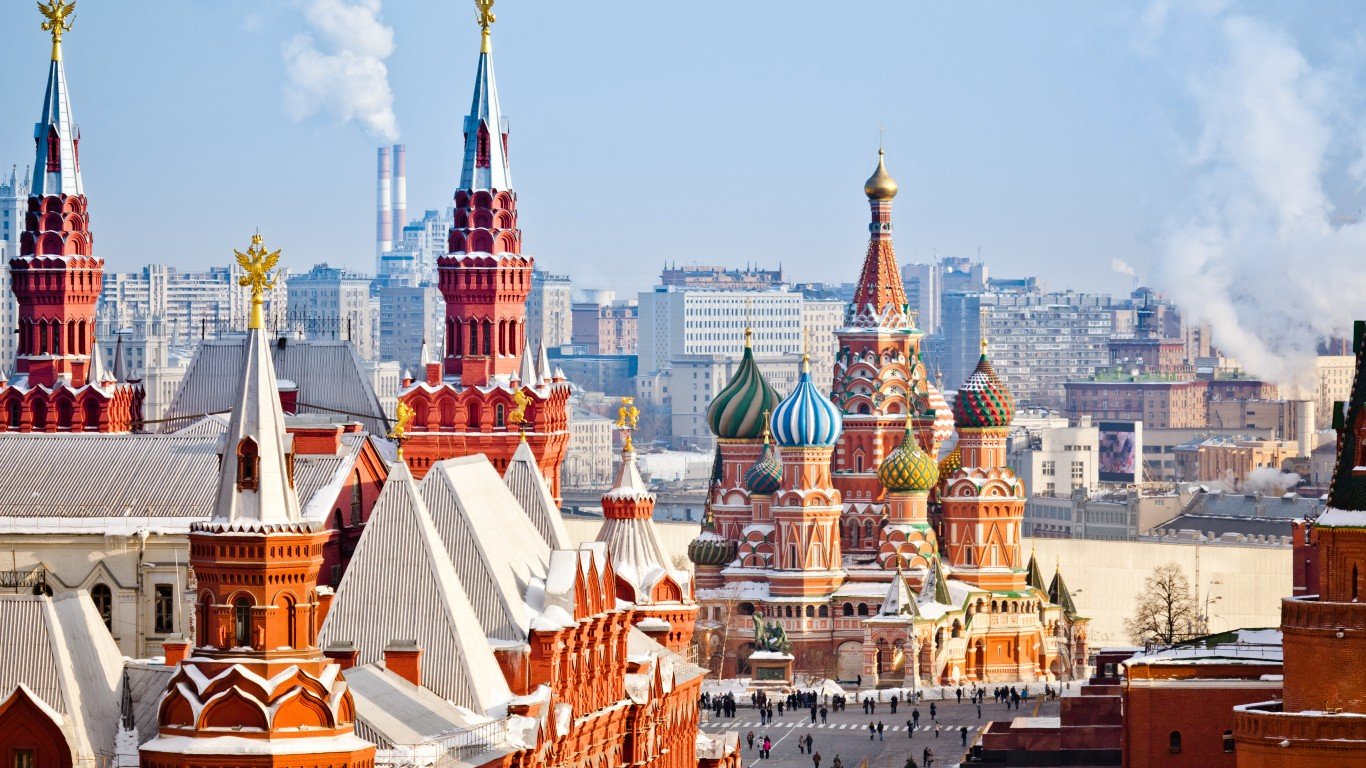
Russian Federation
> GDP: $1,483.50 billion
> GNI per capita: $29,110
> Population: 144,104,080
The Russian Federation, or Russia, is the largest country in the world, covering 6.6 million square miles. The federation is heir to the Soviet Union, which collapsed in 1991 and has its roots in the Russian Empire, which was toppled by the Bolsheviks during World War I. Since the end of the Soviet Union, the Russian Federation has had a difficult transition toward a democratic state and market-based economy. Under President Vladimir Putin, the country has become more authoritarian, and with recent developments in Ukraine, Russia has returned to its expansionist legacy.
[in-text-ad]
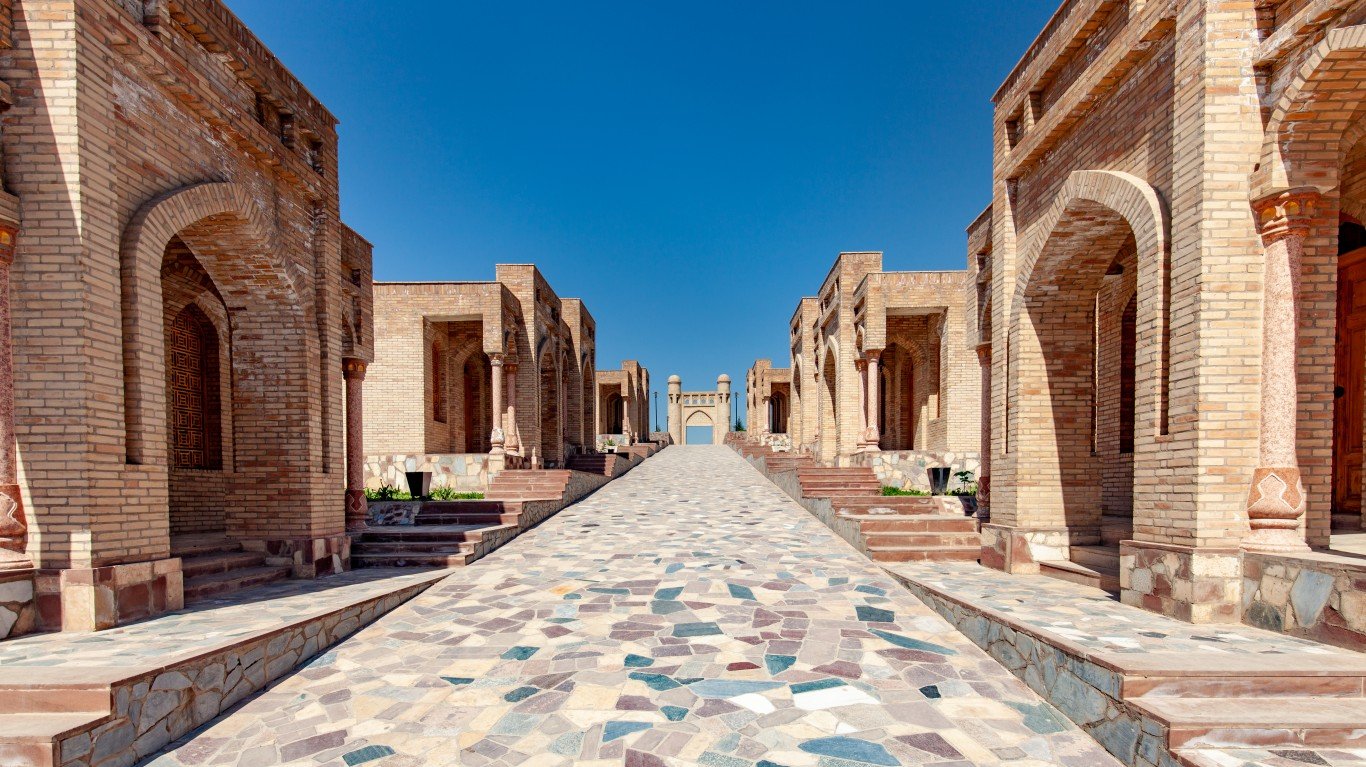
Tajikistan
> GDP: $8.19 billion
> GNI per capita: $4,500
> Population: 9,537,642
Tajikistan is another central Asian landlocked country, and according to the U.S. Department of State, one of the poorest in the world. The Tajik people came under the thumb of the Russian Empire in the middle part of the 19th century. After the Russian Revolution in 1917, the Bolsheviks had a difficult time getting control of the region and finally did so in 1925. An independent Tajikistan was declared in 1991 after the Soviet Union broke up, and a civil war followed. Election corruption and irregularities have been commonplace after the nation achieved independence.
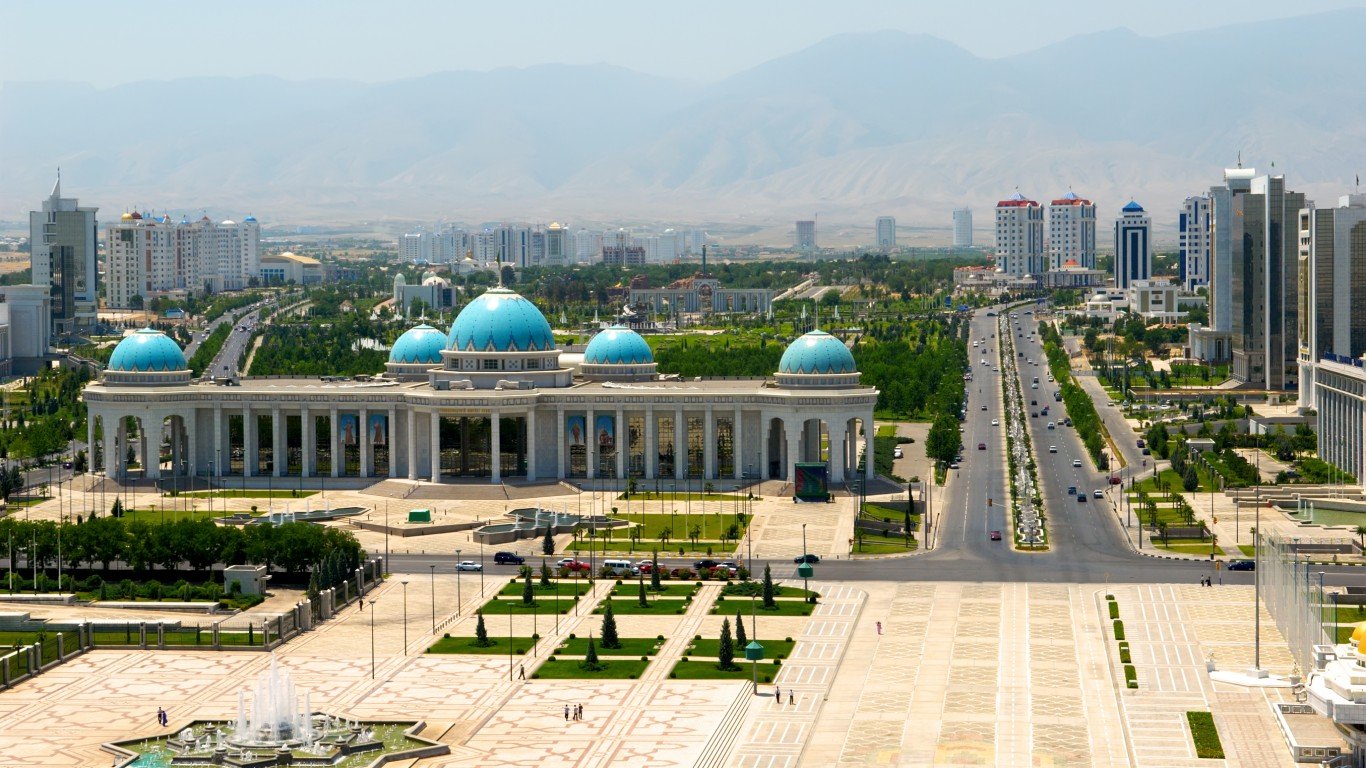
Turkmenistan
> GDP: $45.23 billion
> GNI per capita: $15,600
> Population: 6,031,187
Turkmenistan has been the crossroads of civilization for thousands of years. After Kazakhstan, Turkmenistan is the least densely populated of the central Asian nations. The region was claimed by Tsarist Russia in the late 19th century. Anti-Bolshevik sentiment was strong after the Russian Revolution, and Turkmen resisted until the area became a Soviet Republic in 1924. After it gained independence following the breakup of the Soviet Union, Turkmenistan has had a fitful transition to representative government, as elections have been regarded as undemocratic. Gurbanguly Berdimuhamedow has won elections with more than 97% of the vote twice.
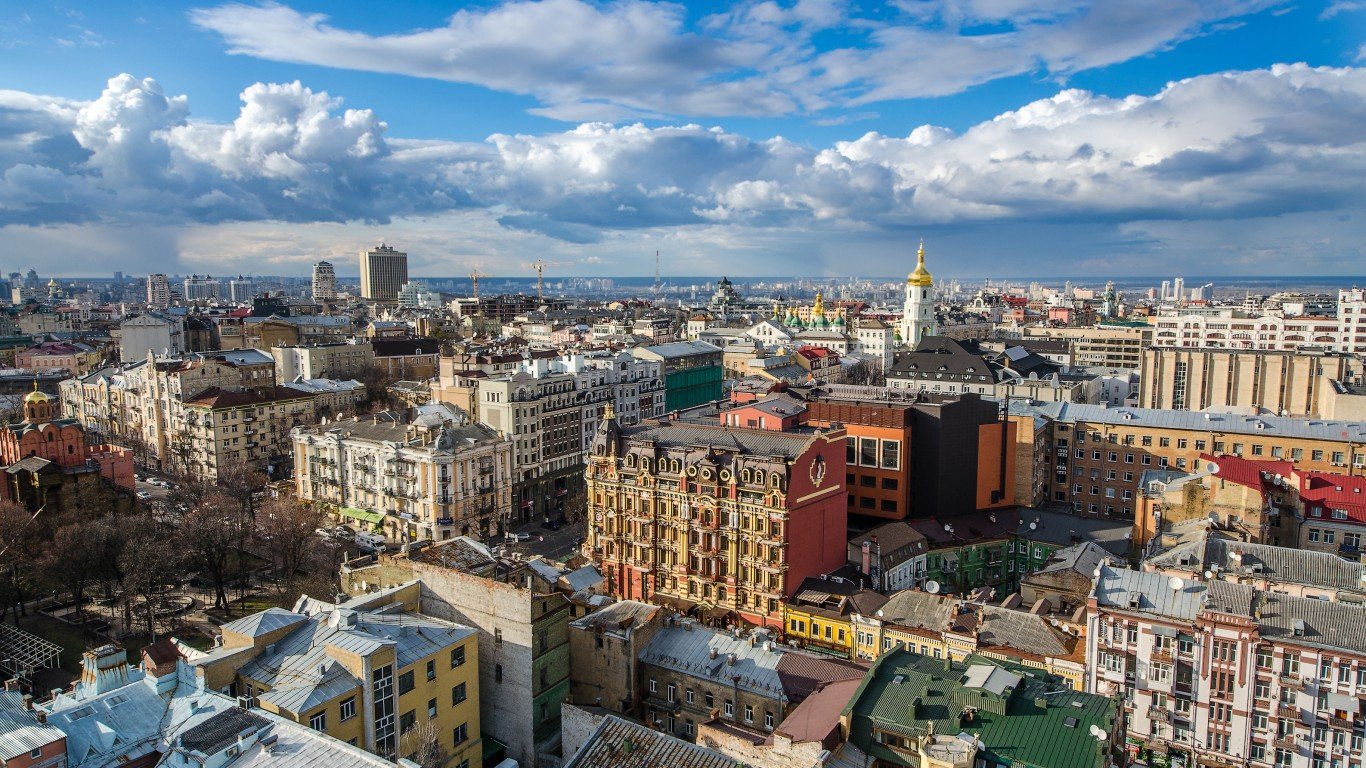
Ukraine
> GDP: $155.50 billion
> GNI per capita: $13,390
> Population: 44,134,693
After weeks of saber rattling and cyberattacks, Russia invaded Ukraine on Feb. 24. This is the latest chapter in the problematic relationship between the two nations. Much of Ukraine was absorbed by the Russian Empire in the last part of the 18th century. Ukraine experienced a brief period of independence after the Russian Revolution but was taken over by the Soviet Union in 1920. Oppressive Soviet economic policies caused several horrific famines in the 1920s and 1930s in which more than 8 million died. World War II was a catastrophe for Ukraine, when up to 8 million people were killed.
After Ukraine became independent following the collapse of the Soviet Union in 1991, the legacy of state control and corruption has hampered democratic efforts. Russia annexed the Crimean part of Ukraine in 2014, and Russia began backing Ukraine’s eastern provinces that were sympathetic to Russia.
[in-text-ad-2]
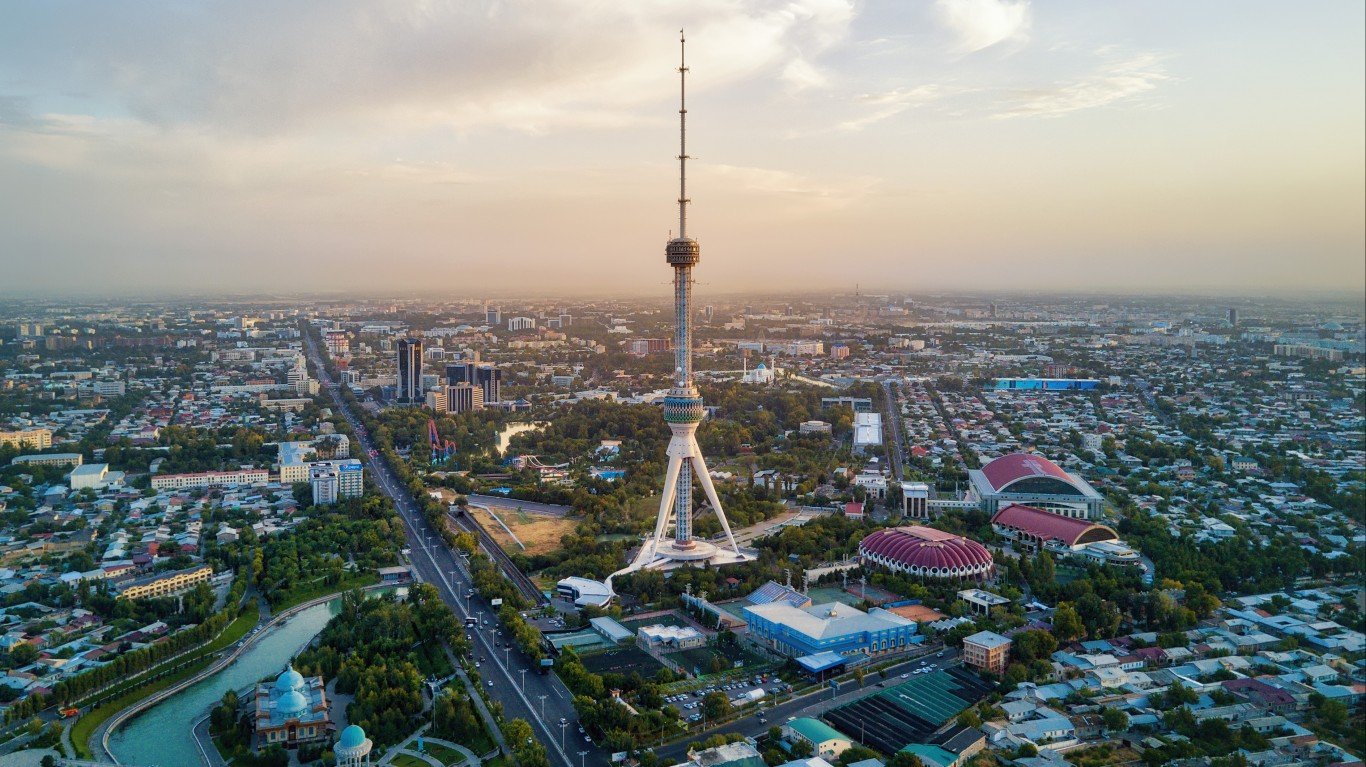
Uzbekistan
> GDP: $59.93 billion
> GNI per capita: $7,710
> Population: 34,232,050
Uzbekistan is a landlocked central Asian nation north of Turkmenistan and south of Kazakhstan. Russia conquered what is present-day Uzbekistan in the late 19th century. Uzbeks resisted the Red Army after the Bolshevik Revolution, but the area eventually became a Soviet republic in 1924. Since it became independent after the fall of the Soviet Union, Uzbekistan has had steady leadership. Its first president, Islom Karimov, led the nation for 25 years until he died in 2016. His successor, former Prime Minister Shavkat Mirziyoyev, is credited with introducing economic, judicial, and social reforms.
Essential Tips for Investing: Sponsored
A financial advisor can help you understand the advantages and disadvantages of investment properties. Finding a qualified financial advisor doesn’t have to be hard. SmartAsset’s free tool matches you with up to three financial advisors who serve your area, and you can interview your advisor matches at no cost to decide which one is right for you. If you’re ready to find an advisor who can help you achieve your financial goals, get started now.
Investing in real estate can diversify your portfolio. But expanding your horizons may add additional costs. If you’re an investor looking to minimize expenses, consider checking out online brokerages. They often offer low investment fees, helping you maximize your profit.
Thank you for reading! Have some feedback for us?
Contact the 24/7 Wall St. editorial team.
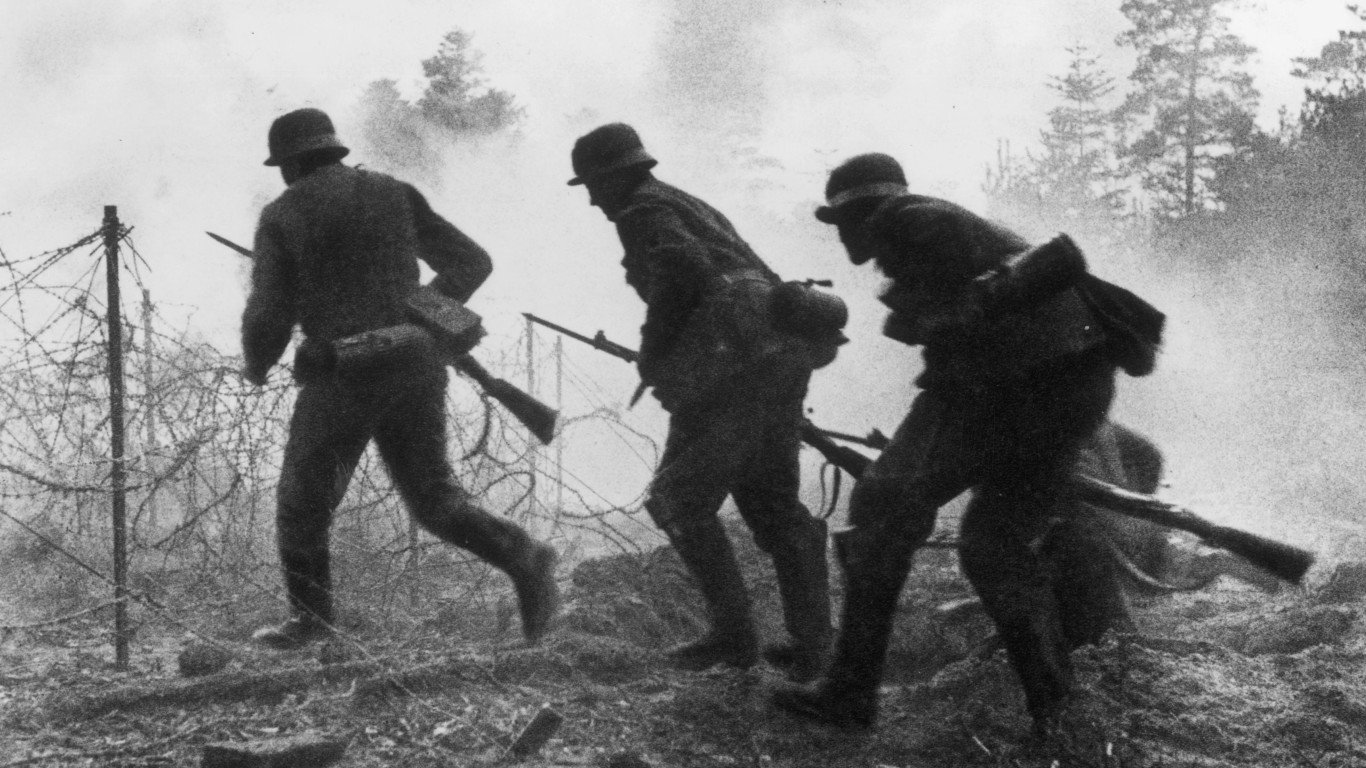 24/7 Wall St.
24/7 Wall St.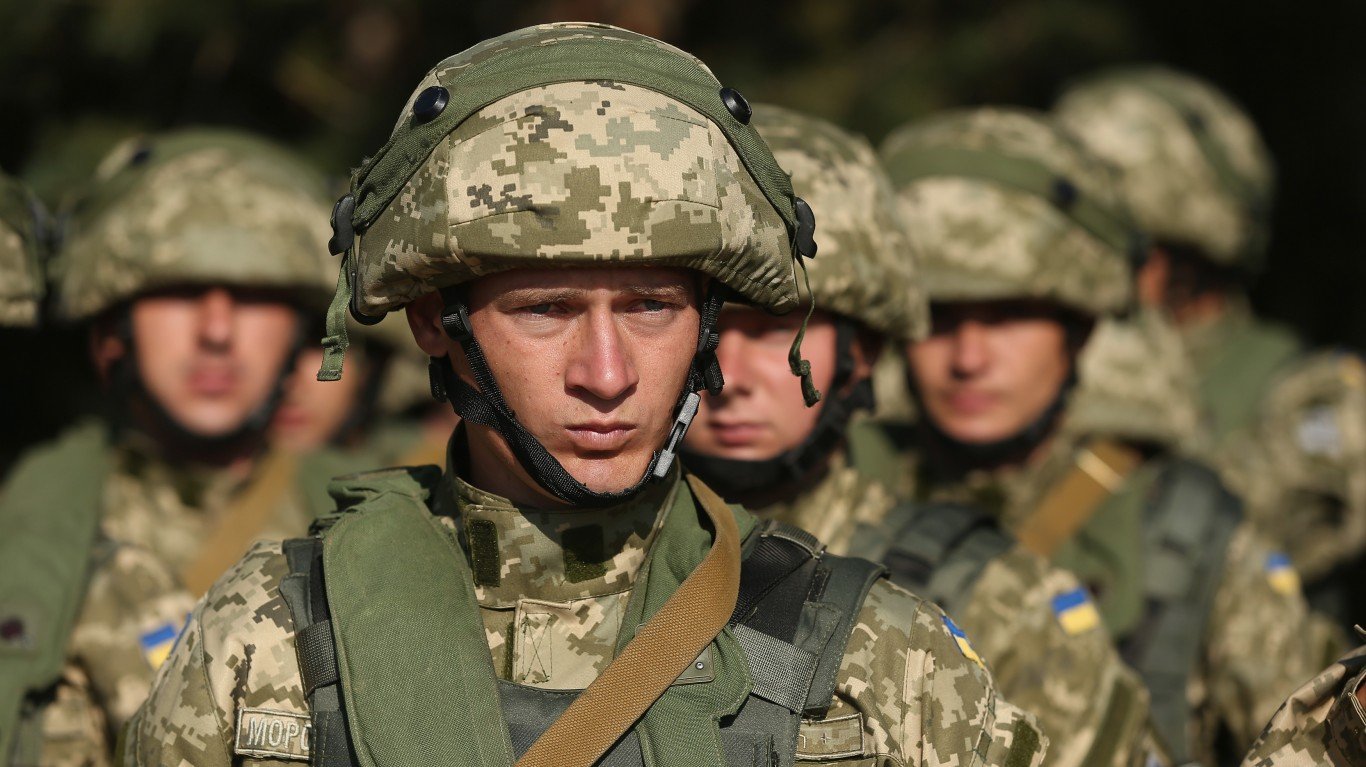 24/7 Wall St.
24/7 Wall St.